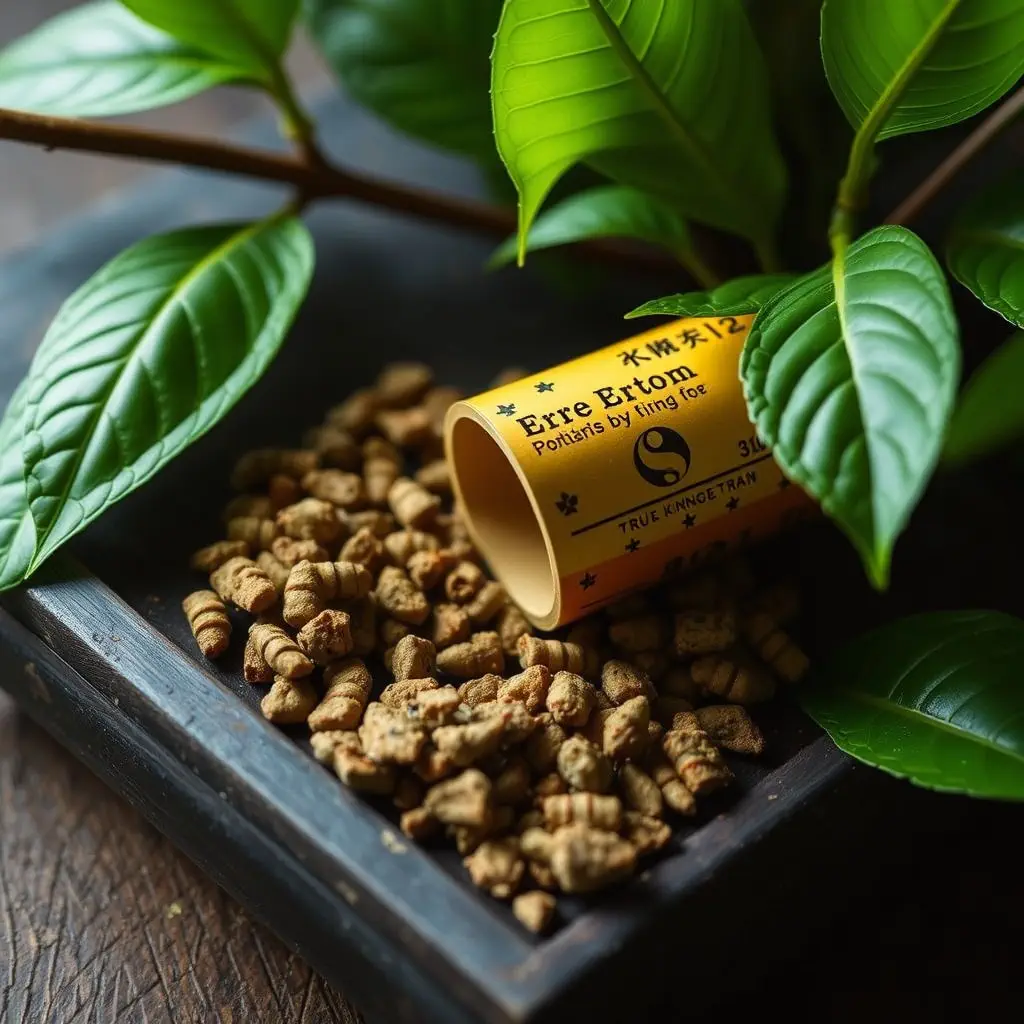The Lotus Blue Flower, a variant of the Kratom plant, has been studied for its potential to enhance human endurance through its active alkaloid HPME. This compound interacts with opioid receptors to potentially reduce pain and effort perception during physical exertion, while also influencing neurotransmitter systems related to pain and energy regulation. Consequently, it may offer increased stamina and reduced fatigue, making it a promising option for those seeking to improve endurance naturally, whether for athletic performance or daily physical tasks. The Lotus Blue Flower's unique alkaloid profile, which includes mitragynine and 7-hydroxymitragynine, sets it apart from other Kratom strains. These alkaloids are known to affect the central nervous system in ways that could boost stamina, diminish fatigue, enhance well-being, and alleviate pain, all of which are beneficial for sustained physical activity. It's important for users to be cautious with dosage and to consult healthcare professionals due to individual health factors and varying optimal dosages. The extract from the Lotus Blue Flower has gained attention among endurance athletes as an ergogenic aid, promoting energy and focus before exercise, and aiding in recovery after intense physical activity by modulating pain and fatigue. Proper dosing, timing of consumption, and adherence to safety guidelines are critical for maximizing performance benefits while minimizing risks. Users should be aware of legal considerations and continuously monitor for side effects, ensuring both the efficacy and safety of its use in an athletic context.
Exploring the natural boundaries of human endurance, this article delves into the potential of kratom—specifically, its active alkaloid Mitragyna Hydroxypropyl Methyl Ether (HPME)—to elevate performance. We’ll dissect the Lotus Blue Flower Effect, a phenomenon linked to kratom’s unique alkaloids, and how it can be harnessed for stamina enhancement. Additionally, we’ll guide endurance athletes on strategic supplementation with kratom, covering critical aspects like dosage, timing, and safety measures to ensure optimal and responsible use. Join us as we unravel the complexities of this ancient botanical remedy in the modern realm of athletic endurance.
- Unlocking Endurance Potential with Kratom: The Role of Mitragyna Hydroxypropyl Methyl Ether (HPME)
- Navigating the Lotus Blue Flower Effect: Kratom Alkaloids and Their Impact on Stamina Enhancement
- Strategic Supplementation with Kratom for Endurance Athletes: Dosage, Timing, and Safety Considerations
Unlocking Endurance Potential with Kratom: The Role of Mitragyna Hydroxypropyl Methyl Ether (HPME)

Unlocking endurance potential with Kratom involves a nuanced understanding of its alkaloid profile and how they interact with the human body. Mitragyna Hydroxypropyl Methyl Ether (HPME) is one such alkaloid found in the leaves of the Kratom plant, which is closely related to the lotus blue flower. HPME is garnering attention for its potential role in enhancing endurance and physical performance. Preliminary research suggests that this alkaloid may contribute to increased stamina and reduced fatigue by modulating neurotransmitter systems responsible for pain perception and energy regulation. The unique structural composition of HPME allows it to engage with the body’s opioid receptors, which can lead to a decreased perception of effort and pain during physical activities. This effect, combined with its potential to bolster muscle endurance, positions HPME as a promising compound for those looking to push their limits in athletic endeavors or everyday physical tasks. As studies continue to explore the effects of HPME from the lotus blue flower, it is clear that this naturally occurring alkaloid holds considerable promise for those seeking to unlock and enhance their endurance capabilities through Kratom’s natural benefits.
Navigating the Lotus Blue Flower Effect: Kratom Alkaloids and Their Impact on Stamina Enhancement

When considering natural supplements for endurance enhancement, kratom, a plant native to Southeast Asia, has garnered attention for its potential benefits. Among the various strains of kratom, Lotus Blue Flower stands out due to its distinct alkaloid profile. These alkaloids, mitragynine and 7-hydroxymitragynine, are particularly noteworthy for their effects on physical performance and energy levels. Mitragynine, the primary active component in kratom, is known to influence the central nervous system, potentially leading to increased stamina and reduced fatigue. This can be particularly beneficial for those looking to improve their endurance during exercise or athletic activities. The alkaloid 7-hydroxymitragynine further complements these effects by promoting a sense of well-being and reducing the perception of pain, which can otherwise be limiting factors in prolonged physical exertion. Users often report an enhanced capacity to sustain activity, which can be attributed to the synergistic action of these compounds on both physical and mental endurance. It is important for individuals to approach kratom use with caution, as the optimal dosage and its interaction with personal health conditions vary. Consultation with healthcare professionals is recommended before integrating Lotus Blue Flower kratom into an endurance-improving regimen to ensure safety and efficacy.
Strategic Supplementation with Kratom for Endurance Athletes: Dosage, Timing, and Safety Considerations

For endurance athletes seeking to enhance their performance, strategic supplementation with kratom, particularly in the form of Lotus Blue Flower extract, can be a consideration. Kratom, derived from the leaves of the Mitragyna speciosa tree, is known for its potential ergogenic benefits. When integrating kratom into an athlete’s regimen, dosage plays a critical role in optimizing endurance without compromising safety. Typically, a lower dose can be administered prior to training or competition to promote energy and focus, while a slightly higher dose may be used for recovery purposes post-exercise. The alkaloids present in kratom, such as 7-hydroxymitragynine and mitraphylline, are believed to contribute to its ergogenic effects by modulating pain perception, reducing fatigue, and potentially increasing muscular strength over time.
Timing the intake of kratom is equally significant for athletes. The onset of effects can vary based on individual metabolism and the specific form of kratom used. Generally, it is advised to consume kratom extracts like Lotus Blue Flower about 30 to 60 minutes before activity to allow sufficient time for the substance to take effect. Athletes should also be cognizant of how their bodies respond to different dosages and timings, as personal tolerance levels can differ significantly. Safety considerations are paramount; athletes should adhere to recommended guidelines, start with lower doses to gauge their response, and remain informed about the legal status of kratom in their respective regions. Regular monitoring for any adverse effects is essential, and consulting with a healthcare professional before incorporating kratom into an athletic training program is strongly recommended to ensure both efficacy and safety.
Kratom’s potential in endurance improvement is increasingly recognized, particularly through its active alkaloid, Mitragyna Hydroxypropyl Methyl Ether (HPME), which plays a pivotal role in enhancing physical stamina. The lotus blue flower effect, a term often used interchangeably with the broader benefits of kratom alkaloids, offers insights into how these compounds can significantly augment endurance. Strategic supplementation for athletes, considering dosage and timing, is crucial for safety and effectiveness. As research continues to evolve, it’s clear that kratom may offer a promising avenue for those seeking to push their physical limits. Athletes interested in incorporating kratom into their training regimen should approach it with caution, adhering to guidelines set forth by healthcare professionals and regulatory bodies. With a growing body of evidence supporting its use, kratom remains a topic of interest and investigation within the realm of endurance sports.






